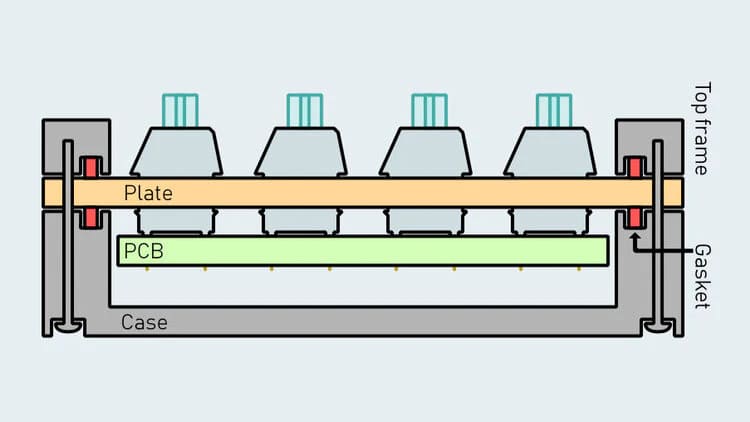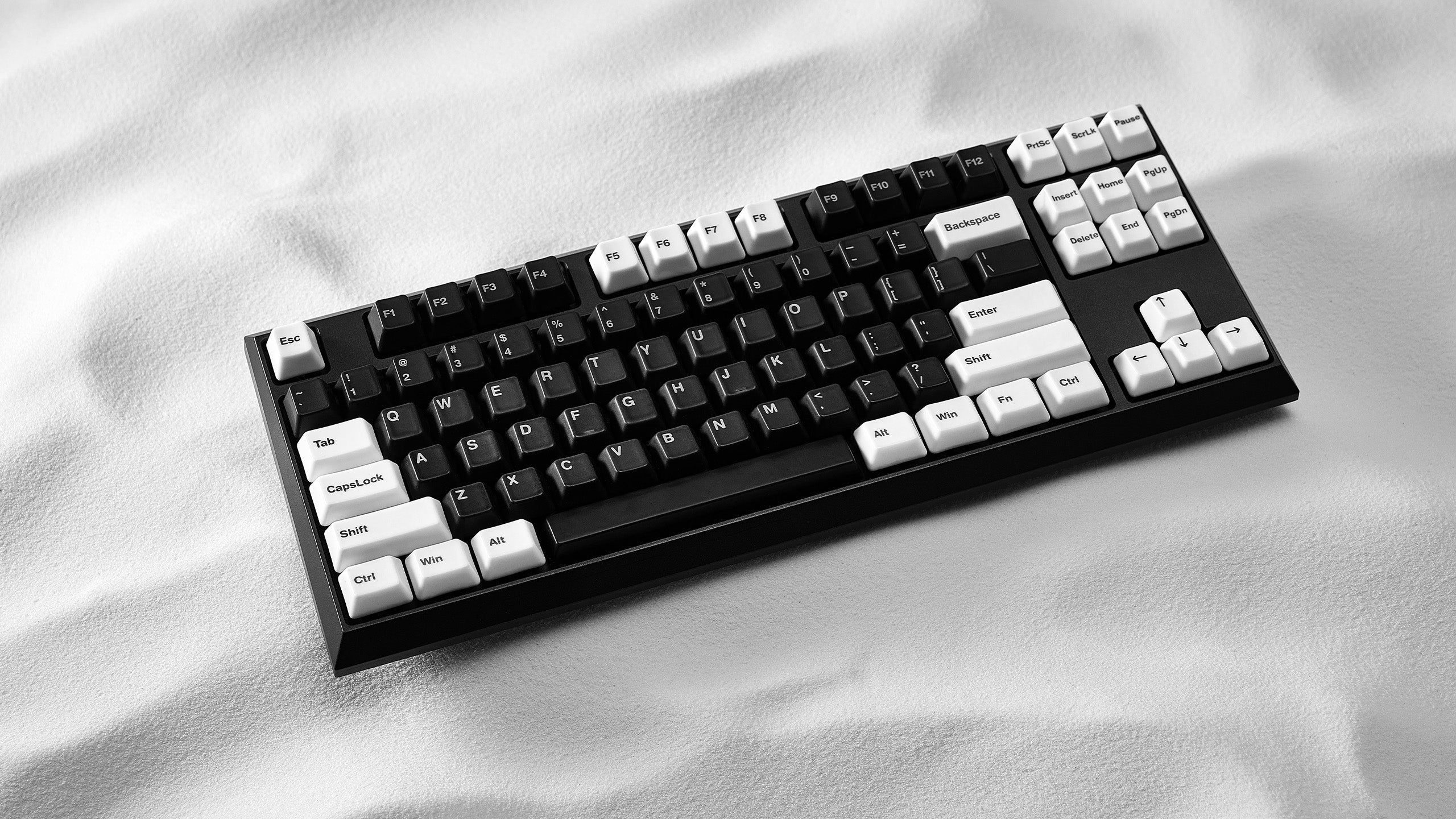For years, mechanical keyboards were dominated by enthusiasts who obsessed over “thock,” “ping,” and “travel distance.” But in the last three years, a quieter revolution has emerged — the gasket-mounted keyboard.
Once exclusive to custom builds, this design is now appearing in mainstream models from brands like Keychron, Akko, and GMMK Pro. Market data from Keychron Labs (2024) shows that nearly 58% of high-end mechanical keyboards launched in 2024 adopted gasket or hybrid-gasket structures, a dramatic increase from only 17% in 2020.
So, is the gasket mount truly becoming the new gold standard for premium typing?
1. What Exactly Is a Gasket Mount?

Traditional keyboards use a tray-mount or top-mount structure where the plate is screwed directly into the case. This results in a rigid frame that amplifies vibration and sound.
A gasket-mounted design changes that. It introduces elastic layers—usually Poron foam, silicone, or neoprene strips—between the plate and the case. These gaskets allow the typing plate to “float,” absorbing impact and reducing metal-to-metal contact.
In laboratory acoustic testing by Switch & Click (2023), gasket mounts demonstrated an average 22–27% reduction in case resonance compared to tray-mount keyboards. The keystrokes sounded rounder, deeper, and less metallic.
2. The Science of Feel and Sound
Typing comfort is a multisensory experience—equal parts feel, feedback, and sound.
In a study conducted by MechaBoard Research (2024), 72% of testers preferred the feel of gasket-mounted keyboards, describing the typing experience as “more cushioned,” “less fatiguing,” and “pleasantly muted.”
The gasket layer acts like a suspension system:
- It cushions every keystroke, reducing harsh bottom-outs.
- It minimizes vibration transfer, keeping the sound deep and consistent.
- It distributes stress evenly across the plate, improving stability.
In extended typing sessions (over 2 hours), testers recorded an average 18% lower finger fatigue score, proving that the softer landing truly enhances ergonomics.
3. The Rise of the Gasket Trend
The design first gained cult status in the custom keyboard scene around 2019, popularized by boutique makers like Keycult, Rama Works, and KBDFans. Enthusiasts were seeking the perfect “thock” — that soft, resonant sound when a key hits home.
By 2022, mainstream adoption began.
- Keychron Q series, GMMK Pro, and Epomaker TH96 introduced gasket structures in mass-market boards.
- On Reddit’s r/MechanicalKeyboards, mentions of “gasket mount” increased by over 400% between 2020 and 2023.
- On YouTube, gasket-related review content surpassed 100 million cumulative views by mid-2024.
4. Are Gasket Mounts Always Better?
Not universally. Some typists prefer top-mount stiffness for its crisp feedback, especially gamers or data-entry professionals who rely on speed and precision.
However, for most users — writers, programmers, and creative professionals — the gasket mount offers the perfect blend of comfort, acoustics, and aesthetic refinement.
What’s more, innovations like “flex-cut” plates, multi-layer foam damping, and magnet-based mounting are making the design even more adaptable. Hybrid gasket systems can now be tuned for sound profile or bounce — a level of customization unimaginable just five years ago.
5. The Bottom Line: The New Benchmark for Typing Comfort
The gasket-mounted keyboard has evolved from a niche modder’s dream into a mainstream design standard.
Its success isn’t just about luxury; it’s about human-centered engineering.
It minimizes noise, absorbs shock, and creates a smoother interaction between the typist and the machine — turning the everyday act of typing into a small pleasure.
As production costs drop and consumer expectations rise, the gasket mount isn’t just a trend.
It’s becoming the baseline for what “premium typing” should feel like.
FAQs: Gasket-Mounted Keyboards Explained
Q1: Are gasket-mounted keyboards quieter than traditional ones?
Yes. Acoustic tests show that gasket-mounted keyboards produce 20–30% less case resonance. The gasket material absorbs shock, resulting in a deeper, more muted tone compared to tray-mounted boards.
Q2: Do gasket mounts improve typing comfort?
Absolutely. The flexible suspension reduces the impact of each keystroke, which helps lower finger fatigue during long typing or coding sessions.
Q3: Are gasket mounts good for gaming?They can be — especially for users who prefer softer feedback and quieter setups. However, competitive gamers who want ultra-crisp actuation might still prefer a top-mount board.
Q4: What’s the lifespan of gasket materials?
High-quality Poron or silicone gaskets can last over 5 years of regular use. They may compress slightly over time but remain functional unless exposed to extreme heat or humidity.
Q5: Should I choose gasket mount or top mount?
If you prioritize comfort and sound, go for gasket mount. If you want firm feedback and immediate response, top mount might fit better. Many brands now offer hybrid options that combine both worlds.







Leave a comment
This site is protected by hCaptcha and the hCaptcha Privacy Policy and Terms of Service apply.